Our patented process brings exotic liquid metal thermal compound to new ROG gaming laptops
Cooling is one of the greatest challenges facing gaming laptops, and ROG is constantly looking for ways to improve. This drive to innovate led to liquid metal compound that more efficiently transfers heat between the CPU and cooling module, providing headroom to improve performance, lower temperatures, and reduce noise. We’re excited to bring this exotic material to the entire 2020 lineup of ROG gaming laptops with 10th Gen Intel Core processors.
Serious overclockers and enthusiasts have long used liquid metal on high-end machines, but it’s typically applied by hand, which isn’t feasible for mass production. For more than a year, we’ve been developing a proprietary process and machine capable of applying it at scale. This is the story of how we’re bringing liquid metal to the masses.
What is liquid metal?
Liquid metals have low melting points that render them fluid at room temperature. These alloys are highly conductive, so they’re extremely effective at transferring thermal energy between surfaces like a processor die and heatsink. The benefits are well-established in overclocking and DIY circles, and internal testing reinforced the appeal for gaming laptops. Our engineers observed a 10~20°C reduction in temperatures depending on the CPU.
The improved thermal interface creates margin that can be used in different ways. Lower temperatures help processors sustain higher clock speeds for longer, and also prevent fans from ramping up to louder RPMs. The additional thermal headroom can also be used to reach even faster frequencies and higher performance.
Although liquid metal’s properties are consistent regardless of the processor, our research indicates that Intel CPUs have the most to gain. The die is small, with heat concentrated in eight distinct regions of the chip. It’s also surrounded by a safe zone on the CPU package that’s free of surface-mounted components that don’t get along with electrically conductive materials. We want to deploy liquid metal where it can have the biggest benefit and be the most reliable.
There are different kinds of liquid metal on the market. We use Conductonaut from Thermal Grizzly because it has a lower concentration of tin, which isn’t as conductive as the gallium and indium that also make up the alloy. Rather than working closely with Thermal Grizzly like we do with other partners, we purchased initial quantities more casually to keep the project a secret. Not even Intel knew of our plans during development.
It’s all in the wrist
Our research into liquid metal extended into how the compound’s properties affect its viability in a manufacturing context. Liquid metal reacts with aluminum, which restricts the materials that can be used in heatsinks and on the production line. And unlike thicker thermal paste, liquid metal is truly fluid; it can easily go anywhere even when carefully squeezed onto the CPU. That’s why applying liquid metal has traditionally been a painstaking process done by hand. While this approach works for individual builders and tuners dealing with one or two chips, automation is required to keep up with the volume of laptops that ROG produces.
We developed a two-stage method that ensures the complete coverage required for optimal performance. The process begins by brushing the compound onto the die and concludes with additional injections to get the amount just right. Custom machinery performs both steps with mechanical precision.
Step one is essentially painting; a mechanized arm wets its brush in a container of liquid metal and then glides back and forth across the CPU. It performs exactly 17 passes, which our extensive testing determined is the ideal number for complete coverage. Rather than simply sliding back and forth, the machine mimics human motion by also moving vertically to add a subtle arc.

Cotton swabs are normally used to spread liquid metal by hand, but they absorb some of the compound and change shape as a result. We experimented with multiple vendors and more than 30 different brush designs to determine the best shape and material for long-term use. The final version is made of silicon, which doesn’t deform or degrade with prolonged exposure.
To minimize accumulation on the edges of the processor, the initial brushing pass makes contact at a different point on the surface than subsequent strokes. The die also is set inside a stainless steel shim that prevents excess compound from spreading to the surrounding area. An earlier version of this shim fit onto the motherboard, but the latest iteration is small enough to sit directly on the CPU package, so it can be used for different laptops from the same generation.
Optimizing the dosage
We did a lot of internal testing to determine how much liquid metal is best. Too little reduces the efficiency of thermal transfer, but too much increases the likelihood of leakage and needlessly wastes an expensive material. The first stage doesn’t apply enough, so a second machine injects more compound at two points on the die. The surface tension created by the initial coat helps spread the additional material without subsequent brushing.
Finding the right components for the second stage was one of the most challenging aspects of the project. Although we were able to use off-the-shelf parts, it was extremely difficult to source ones capable of not only housing liquid metal, but also reliably dispensing a precise dose. The syringe and pump are made of stainless steel to avoid reacting with the compound.

Low viscosity makes liquid metal much more mobile than thicker thermal paste. To keep it from seeping out and shorting adjacent circuitry, we created a special sponge that surrounds the die. This bespoke barrier fits into an incredibly slim space between the heatsink and CPU package that’s only 0.1mm tall—essentially the height of the die itself. We spent a lot of time balancing the thickness and density of the sponge to ensure containment without compromising contact between the heatsink and processor.
Intel CPUs have a restricted area around the die that is completely free of capacitors. The sponge neatly fills this space, but other processors occupy the same region with surface-mounted circuitry that’s prone to shorting upon contact with the conductive compound. We’re currently exploring insulating techniques to prevent the problem. They show promise but aren’t yet ready for mass production.
ROG is so metal
Our liquid metal project is still ongoing as we continue pursuing better cooling for gaming laptops. Last year’s ROG Mothership was our first system to take advantage of the technology. Its limited production run allowed us to pilot an earlier version of the process that relied on hand-painting the initial coat. We automated the brushing stage to improve efficiency and redesigned the shim to work across different motherboards, enabling a much wider rollout across the full family of ROG gaming laptops with 10th Gen Intel Core processors.
Patents on our liquid metal process and sponge formally recognize the innovation ROG continues bringing to gaming laptops. The superior thermal compound enhances cooling enough to tangibly improve performance, temperatures, and acoustics. Where it was once restricted to the realm of hardcore overclocking, we’re making liquid metal available to a much larger audience.
ROG laptops with Thermal Grizzly Conductonaut liquid metal will be available in Q2 of this year. Contact your local ROG representative for details on pricing and availability in your region, and see our 2020 gaming laptop guide to learn about the lineup.
Author
Popular Posts
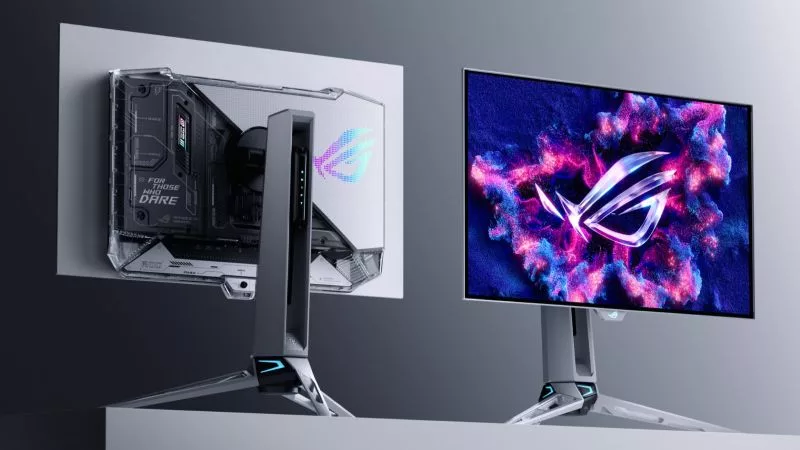
Prepare for Tandem OLED splendor with these new ROG gaming monitors

How to adjust your laptop's P-Cores and E-Cores for better performance and battery life

How to Cleanly Uninstall and Reinstall Armoury Crate
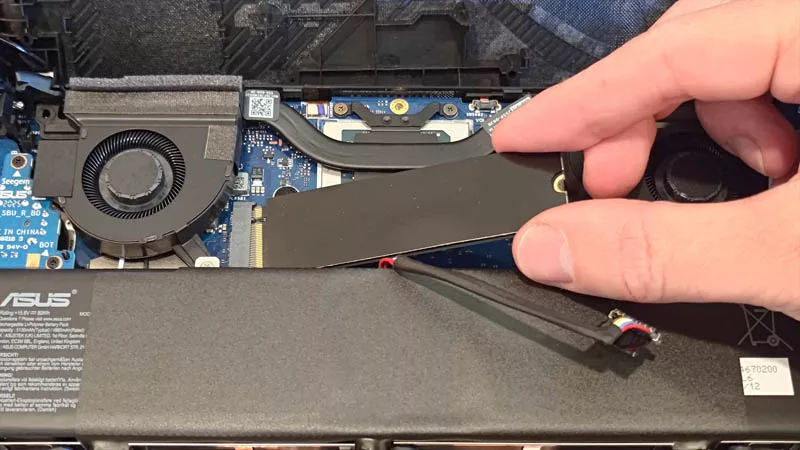
How to upgrade the SSD and reinstall Windows on your ROG Ally, ROG Xbox Ally, or ROG Xbox Ally X
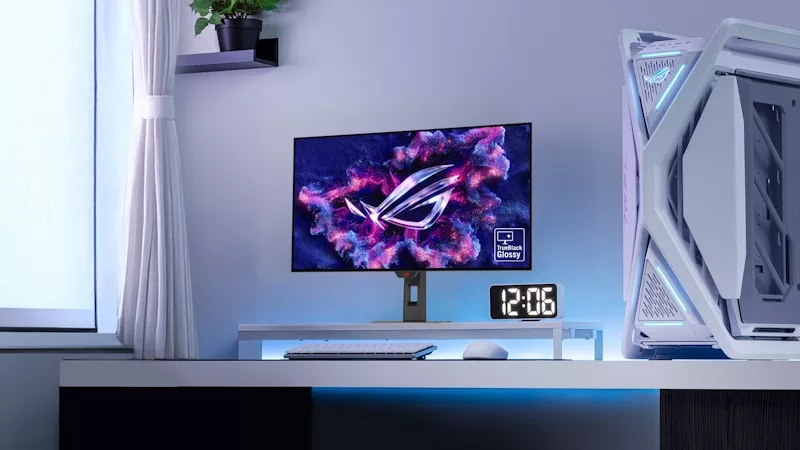
32-inch glossy WOLED panels debut in the ROG Strix OLED XG32UCWMG and XG32UCWG gaming monitors
LATEST ARTICLES

How ROG Intelligent Cooling Keeps Your Laptop Seriously Cool (and Surprisingly Quiet)
We took our entire thermal solution back to the drawing board for extreme performance—without extra noise.
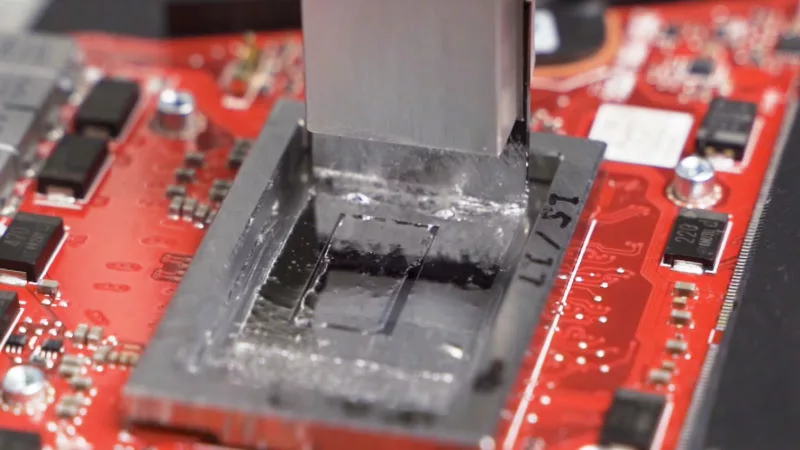
Our patented process brings exotic liquid metal thermal compound to new ROG gaming laptops
An automated application of liquid metal boosts CPU performance for the entire Intel 10th Gen ROG laptop lineup.

Inside our hardcore ROG durability tests
Inside ASUS Quality Test Labs, where we put our products through punishing tests to make sure they withstand the rigors of daily use.

The Aura ecosystem expands into your environment with reactive ambient lighting and more
Check out the new ROG Aura Terminal and Spotlight, plus the latest software to use our SDK.

The evolution of Aura RGB lighting leads to an official SDK
Follow the evolution of Aura RGB lighting from our first onboard LEDs to a full ecosystem of products and new SDK.
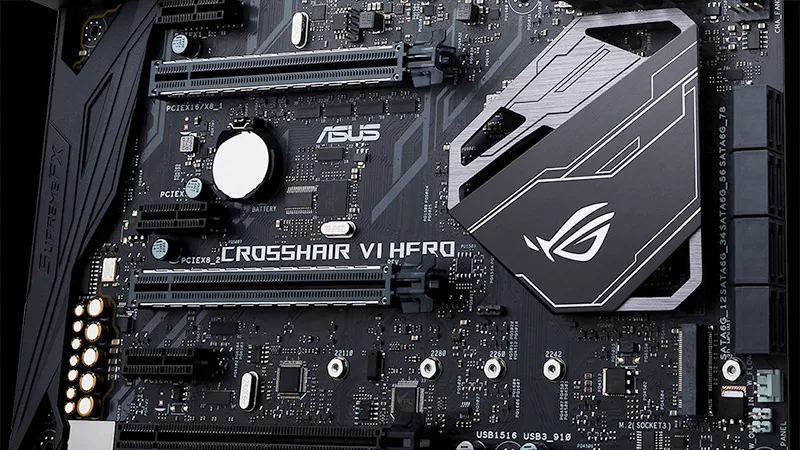
Your guide to the Ryzen AM4 platform and its X370, B350, and A320 chipsets
AMD's Ryzen AM4 platform comes with new X370, B350, and A320 chipsets. Here's what you need to know.
